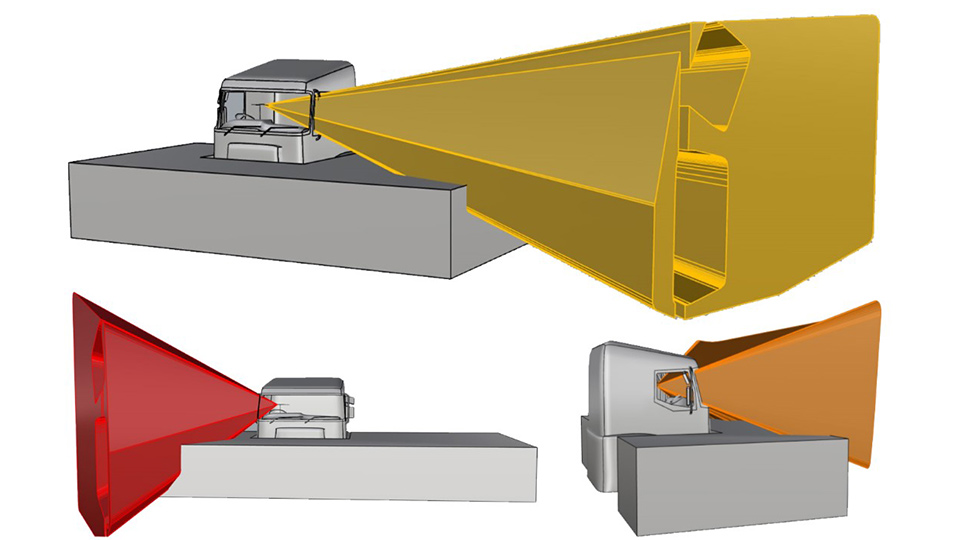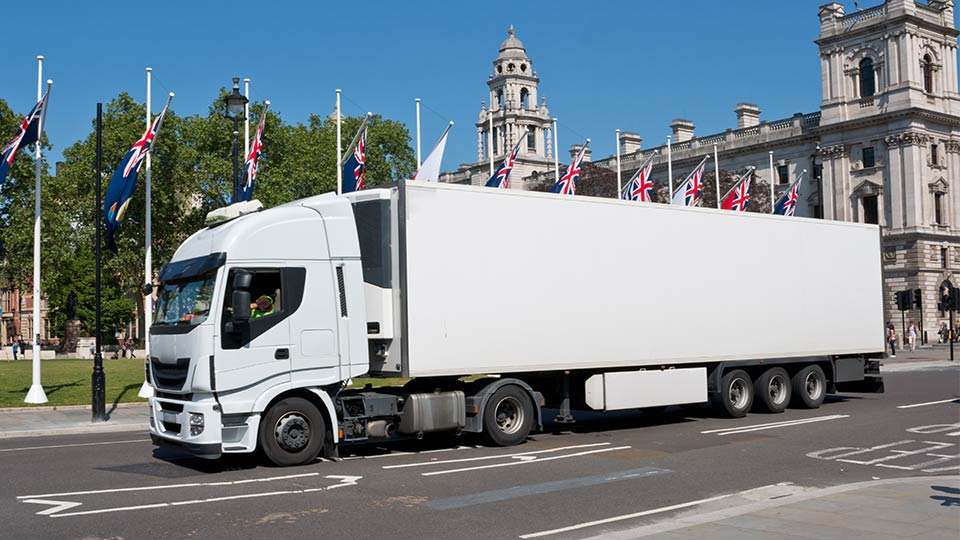Big lorries are disproportionately involved in fatal collisions. Whilst they account for just four per cent of the overall miles driven in the capital, between 2015 and 2017, HGVs were involved in 63 per cent of fatal collisions involving cyclists and 25 per cent involving pedestrians.
The first of its kind, Transport For London's Direct Vision Standard scheme tackles road danger at its source by minimising HGV blind spots which contribute to many tragic deaths and life-changing injuries.
The unique star system rates HGVs over 12 tonnes from zero (lowest) to five (highest) based on how much a driver can see directly through their cab windows.
HGVs will need to meet a minimum ‘one-star’ rating by the time enforcement begins to enable them to operate in London or will need to fit ‘Safe System’ measures to improve the vehicle’s safety.
The School of Design and Creative Arts has been hugely instrumental in bringing the Direct Vision Standard to where it is today.
Their involvement began in 2015 when the team were commissioned by TfL to explore the blind spot size found in 19 trucks using their own CAD system SAMMIE CAD.
This demonstrated that blind spot sizes vary considerably due to different design features of trucks, which led to the recommendation for a Direct Vision Standard.
The team were then commissioned to define and test the Direct Vision Standard and have done so over the past few years in collaboration with TfL and a stakeholder group.
This has involved highly accurate virtual tests that allow a measurement of how much a driver can see by simulating drivers’ vision of a defined space in close proximity to the sides and front of a truck.
The more that a simulated driver can see of this space around the truck, the better the truck performs.
This combines to produce a minimum standard for acceptable direct vision and the star rating system that shows the best vehicles on the market.

The volume of space around the truck that is visible to a driver is created for the left, front, and right windows.
The Mayor of London Sadiq Khan, Transport for London (TfL) and London Councils launched the scheme today (29 October).
From this week, operators can apply for a HGV Safety Permit ahead of enforcement beginning on 26 October 2020.
HGV operators who fail to meet these new minimum safety standards and obtain a permit will be issued a penalty charge for driving in the capital.
The Direct Vision Standard will operate 24 hours a day, seven days a week and will be enforced within the Greater London Boundary.
Owners of vehicles rated zero-star will need to improve the overall safety of their vehicle by fitting a ‘Safe System’ to reduce the risk it presents to people walking, cycling and riding motorcycles before enforcement begins.
These include a camera monitoring system, a noise alert when turning left and sensors. Fitting the ‘Safe System’ will not improve a vehicle's DVS star rating but will bring the safety standard of the vehicle up to allow operators to apply for a Safety Permit.
TfL is also working with the UK Government, European Commission and the United Nations Economic Commission for Europe to develop international regulations on vehicle design standards.
Dr Steve Summerskill, Loughborough’s project lead, commented: “This successful project is the result of the efforts of a number of staff in the School of Design and Creative Arts, who have worked as a team to produce an innovate and accurate testing technique that has been validated by vehicle manufacturers.
“The result will have a beneficial effect on the safety of vulnerable road users (VRUs) in the UK capital and further afield.
“An impact assessment performed by TRL (Transport Research Laboratory) on behalf of the EU showed that European adoption would save hundreds of lives per year.”

Mayor of London Sadiq Khan commented: “I’m proud of our world-leading plans to remove the most dangerous lorries from London’s streets. So many of the tragic deaths on our roads involve HGVs and this new scheme will help save lives.
“Forward-looking businesses have already been choosing safer vehicles in the run-up to HGV safety permits becoming available. Today the scheme has gone live and operators now have 12 months to upgrade their fleets, helping make our streets much safer for people walking and cycling.”
The Direct Vision Standard is part of TfL's Vision Zero commitment to tackle the number of people being killed and seriously injured on London's roads.
As well as working with Loughborough University, TfL worked closely with manufacturers, operators and stakeholders - including RoadPeace and Living Streets - to develop the scheme.
Christina Calderato, Head of Transport Strategy and Planning at TfL, said: “Today we have reached a major milestone in a scheme that will save people’s lives and play a significant role in helping us achieve Vision Zero.
“Transforming the safety of HGVs will dramatically reduce road danger for people walking and cycling, helping us to ensure that everyone gets home safely every day.
“We would like to encourage all operators to check the star rating of their vehicles and take action today, by applying for a permit or fitting a Safe System.”
More information on the launch of the scheme can be found here.
Loughborough Design School's 'The definition, production and validation of the Direct Vision Standard (DVS) for HGVs' report, published in December 2018, can also be found here.


